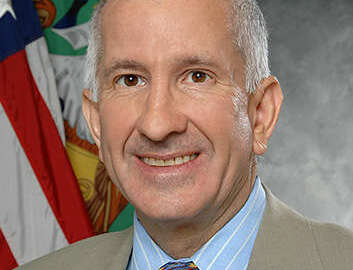

Whistleblower Aid offers free client services ranging from legal steps to transition assistance to mental health resources.
Whistleblower Aid is many things — a non-profit legal group, a non-partisan organization, a toolkit and a helping hand.
What it isn’t is something Executive Director John Tye is adamant about.
“We are not WikiLeaks,” Tye told Federal News Radio. “We help people blow the whistle without breaking the law.”
Tye is one half of the founding partnership behind Whistleblower Aid, which aims to help federal employees, contractors and military service members.
His partner, Mark Zaid, brings more than 20 years of legal expertise representing federal employees in court, including Tye.
“I was a whistleblower during the Obama administration,” Tye said. “I worked at the State Department for 3.5 years, I had a TS/SCI clearance and basically in a classified briefing I learned about the NSA using a legal loophole to collect a ton of Americans’ data, sort of outside of any oversight from Congress or anything else. I think my interest in that area started then and really has developed since then.”
The non-profit launched Sept. 18, with the goal of “trying to be a full service operation to help whistleblowers do the right thing.”
“There’s a lot of complicated things most people don’t know about,” Tye said. “We’re here to basically help fill that void, to provide something new, a new option for people who see government law breaking. To report it, to address it, to expose it, and to hopefully fix it, without breaking the law.”
Tye, a lawyer himself, knew whom to call when he decided to blow the whistle, and was able to find the right lawyers to help him navigate the legal process. It ended up costing him $13,000.
“So all of those things were in my favor and it made it easier for me,” Tye said. “For someone who isn’t a lawyer and doesn’t have $13,000 laying around, that’s who we’re trying to help. We’re trying to help people who see something wrong, they’re scared, they don’t know what to do, they don’t have the money or the knowledge to navigate this process on their own. So they come to us.”
Tye said his firm is paving a new path in several ways, notably in how it secures communications with would-be whistleblowers.
He said Whistleblower Aid provides help in the event someone is fired from their job. This includes helping with employment claims, transition assistance such as rent and mortgage support and job searches, contacts for “psycho-social counseling and treatment,” and even media and congressional testimony coaching.
Whistleblower Aid is also forgoing the usual means of communication in favor of the Tor network. which as Tye explained, is an “anonymous, encrypted part of the internet.”
“So you cannot email us, can’t call us on the phone, send us a text message or send us a letter,” Tye said.
Thanks to hacks and breaches in both the public and private sectors, it’s clear data is very insecure on digital devices, Tye said, adding that he understands why whistleblowers would be concerned about their secrets being watched or emails being stolen.
Whistleblower Aid provides instructions for how to install the Tor browser, and a special Onion URL to reach the group’s SecureDrop.
“We hope that we’ll be part of the effort to introduce these more secure communication tools to the public,” Tye said. “We’re trying to build trust with clients. Think about someone who has evidence of crimes by senior officials, especially if that evidence involves a foreign government, or foreign intelligence agency. That is very, very sensitive and they will probably be scared to use any insecure method to communicate about that, and so we want our system to inspire confidence.”
Tye doubled down on not wanting Whistleblower Aid to be a place to send classified information. So much so that Whistleblower Aid modified its SecureDrop mechanism to filter out classified documents.
“Whistleblowing is not the same as leaking,” Tye said. “Whistleblowing is reporting and exposing lawbreaking by government agencies or officials. Leaking means disclosing classified information to someone who is not authorized to receive it. The way to think about these two categories is imagine a Venn diagram. They’re overlapping circles. It’s possible to be a whistleblower without being a leaker and it’s possible to be a leaker without being a whistleblower.”
Copyright © 2025 Federal News Network. All rights reserved. This website is not intended for users located within the European Economic Area.



